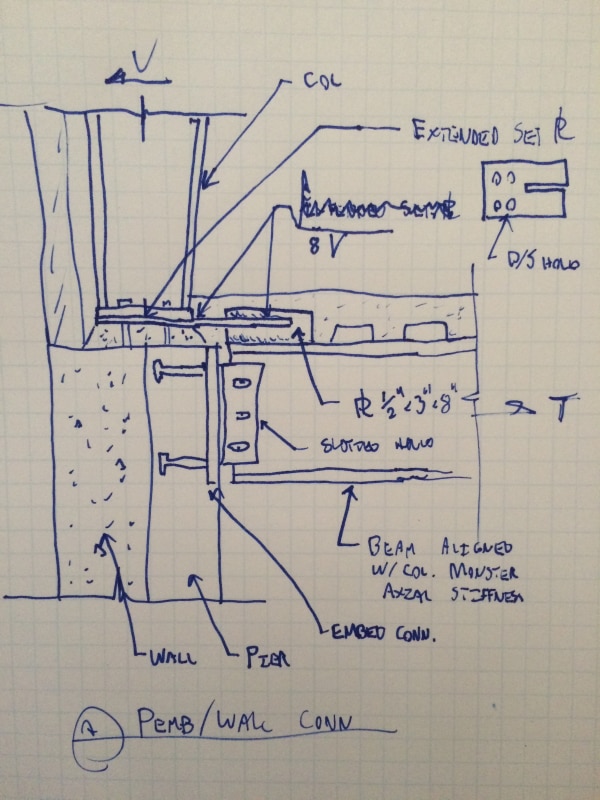Got a client who wants to build a 2 story PEMB house over a basement. The basement will be concrete walls supporting bar joists and metal deck.
The outward frame thrust is about 13k - mainly due to gravity loads from a green roof on top. I was thinking about tying the opposing frame legs together with a 2 1/2" piece of tube steel running in the floor system cavity rather than trying to resolve the forces individually into the basement wall. Of course the net horizontal force will still have to be dealt with.
The PEMB folks seem to be on board.
Any things I should consider?
The outward frame thrust is about 13k - mainly due to gravity loads from a green roof on top. I was thinking about tying the opposing frame legs together with a 2 1/2" piece of tube steel running in the floor system cavity rather than trying to resolve the forces individually into the basement wall. Of course the net horizontal force will still have to be dealt with.
The PEMB folks seem to be on board.
Any things I should consider?

